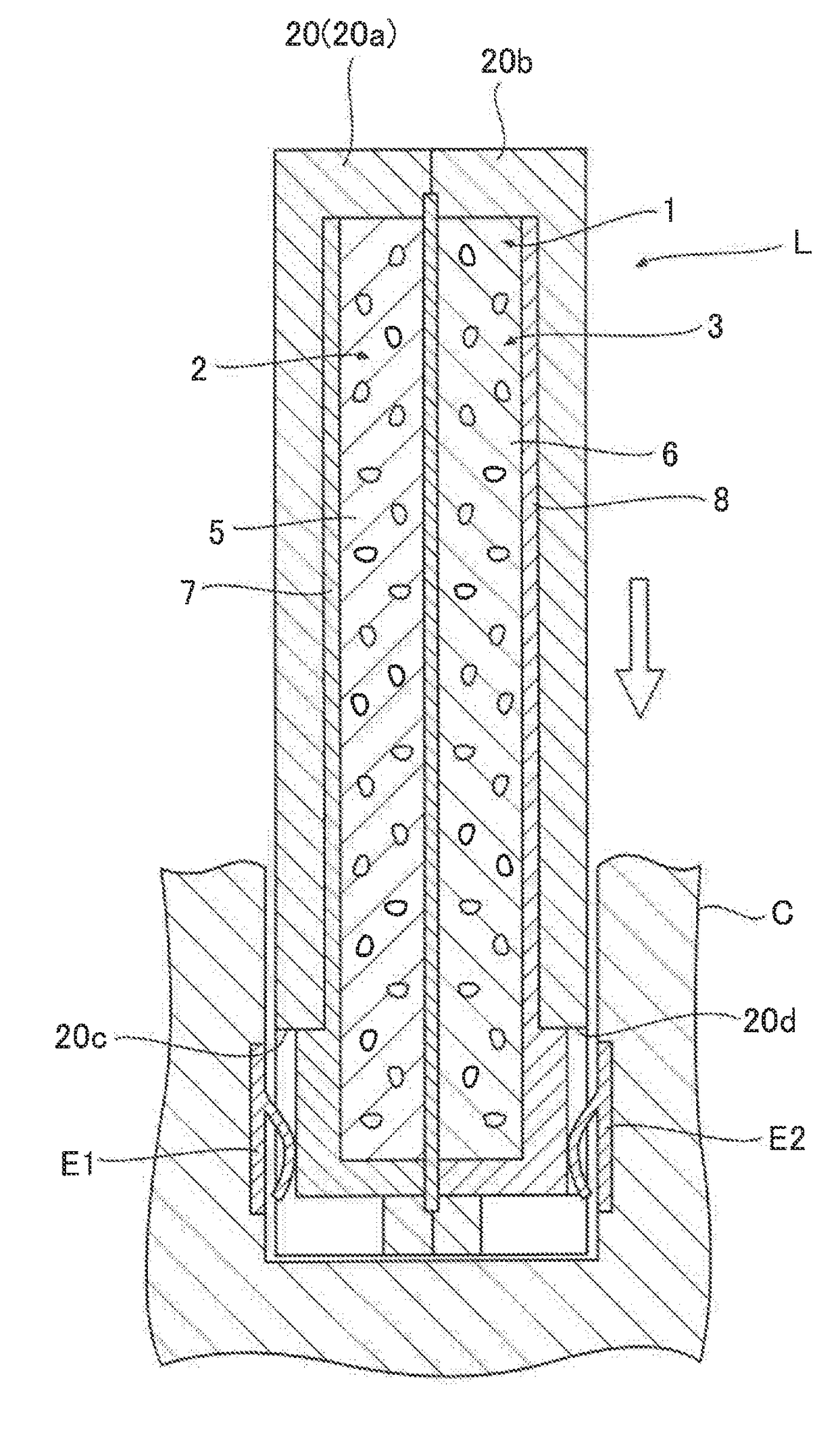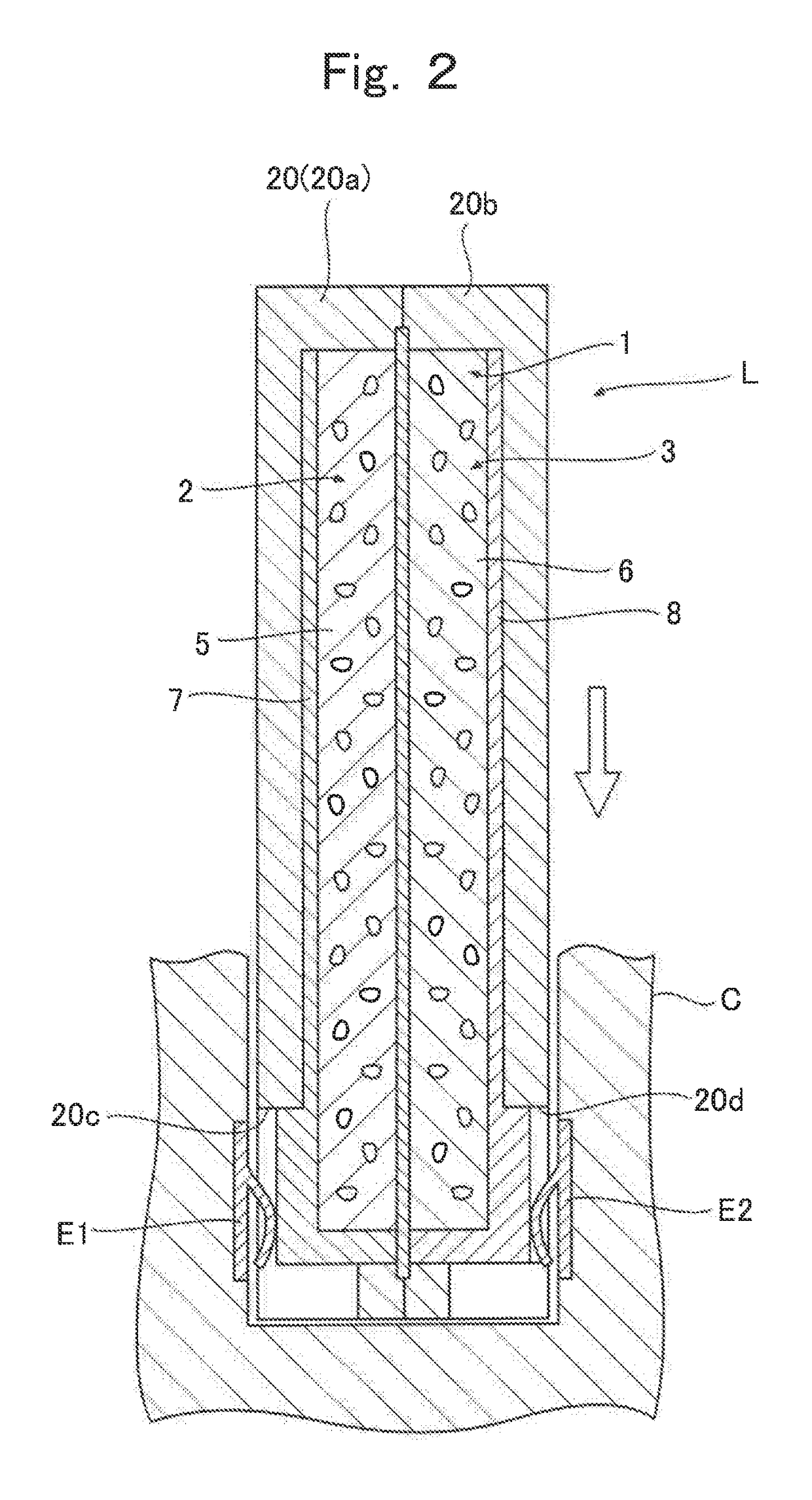Method for producing lithium ion cell and lithium ion cell
a lithium ion and cell technology, applied in the direction of cell components, sustainable manufacturing/processing, batteries, etc., can solve the problems of increasing the amount of electrode active material which can be used, remained difficult to increase the capacity, and it is difficult to achieve both high capacity and light weigh
- Summary
- Abstract
- Description
- Claims
- Application Information
AI Technical Summary
Benefits of technology
Problems solved by technology
Method used
Image
Examples
first embodiment
[0098]First, by using a mold, the first divided container 20e and the second divided container 20f are molded. Then, a current collector forming process by which the positive electrode current collector 7 and the negative electrode current collector 8 are formed, using similarly a mold, on the inner side of the molded first divided container 20e and second divided container 20f is performed. Since details of the molding process are almost the same as the molding process of the lithium ion cell L of the first embodiment described above, no further descriptions are given herein.
[0099]Subsequently, as illustrated in FIG. 6A, a negative electrode composition is filled in the second divided container 20f having the negative electrode current collector 8 formed inside of the container to form the negative electrode active material layer 6, Subsequently, as illustrated in FIG. 6B, the separator 4 is formed on top of the negative electrode composition and, as illustrated in FIG. 6C, an elec...
third embodiment
[0104]As illustrated in FIG. 7 and FIG. 8, a container 20 of the lithium ion cell L″ is a resin molded body and is composed of a first divided container 20j and a second divided container 20k. The first divided container 20j is molded in a hollow truncated cone shape having a base. The second divided container 20k has a substantially circular plate shape that covers an opening part of the first divided container 20j.
[0105]As illustrated in FIG. 8, a separator 4 whose circumference is supported by a frame body 11 is arranged inside the first divided container 20j. This separator 4 separates the first divided container 20j into a positive electrode chamber 2 and a negative electrode chamber 3.
[0106]Grooves 12 extending in a vertical direction are formed on inner surface of the first divided container 20j, as illustrated in FIG. 7 and FIG. 8, and a groove 13 extending a diameter direction is formed on a bottom surface of the second divided container 20k, as illustrated in FIG. 8. By ...
PUM
| Property | Measurement | Unit |
|---|---|---|
| Electrical conductivity | aaaaa | aaaaa |
| Electrical conductor | aaaaa | aaaaa |
Abstract
Description
Claims
Application Information
 Login to view more
Login to view more - R&D Engineer
- R&D Manager
- IP Professional
- Industry Leading Data Capabilities
- Powerful AI technology
- Patent DNA Extraction
Browse by: Latest US Patents, China's latest patents, Technical Efficacy Thesaurus, Application Domain, Technology Topic.
© 2024 PatSnap. All rights reserved.Legal|Privacy policy|Modern Slavery Act Transparency Statement|Sitemap



